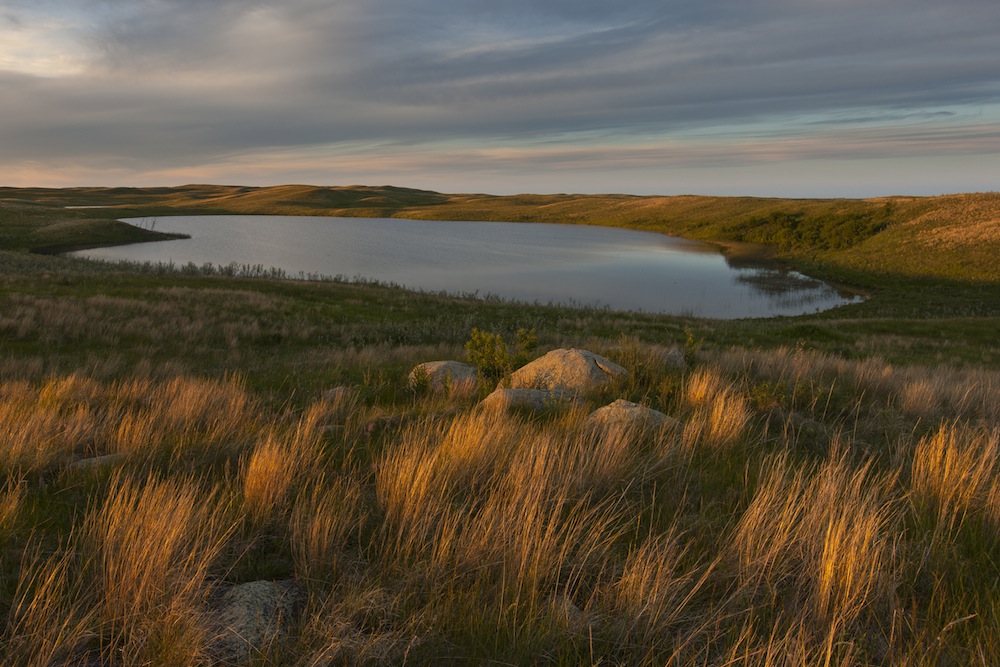For more than 50 years The Nature Conservancy has been working in the Prairie Pothole Region to protect the remaining grasslands and wetlands that are critically important to the nation’s migratory waterfowl, grassland birds, and resident wildlife. Further, these grasslands have and continue to serve as the economic cornerstone for the local ranching communities all while protecting the regions clean and abundant water supply.
With more than 1 million members The Nature Conservancy is one of the leading conservation organizations working around the world to address the most pressing conservation threats to nature and people. The Conservancy is a science-based, collaborative and non-confrontational nonprofit organization that looks for ways to protect nature so that all life will benefit from the services nature provides. It strategically targets its efforts by using a variety of tools such as land acquisition, conservation easements, preservation of working lands, collaboration with key partners, and developing creative financing to find pragmatic solutions to conservation challenges.
The Conservancy implements these strategies in a number of ways throughout the PPR. Since 2010 it has provided more than $14 million in matching funds to NAWCA projects, effectively leveraging more than $25 million in federal funds for wetland and grassland protection. It has also played a pivotal role in supporting national policies important to the PPJV including the Sodsaver and Conservation Compliance provisions in the 2014 Farm Bill.
A few recent activities include:
In Iowa, The Conservancy is a lead partner in the Little Sioux Valley watershed and collaborates with a number of PPJV partner organizations and others to accelerate and expand private lands’ stewardship and protection through the implementation of sustainable grazing and grassland best management practices.
In Montana, The Conservancy contributes to a strong partnership with other PPJV members to deliver conservation on the Hi-Line and Rocky Mountain Front. The Conservancy has secured over 12,500 acres of conservation easements on prairie pothole habitat using NAWCA funding. Additionally, the 60,000 acre Matador Ranch Grassbank Project enhances conservation on 256,000 acres of private lands by incentivizing ranching partners to implement best management practices for grazing and wildlife habitat on their home ranches.
In South Dakota, The Conservancy is facilitating a cross-border collaborative mapping process to systematically quantify all remaining tracts of native prairie on the Prairie and Missouri Coteaus. This effort will help PPJV partners more effectively target and accelerate efforts to protect the highest priority grasslands. Part of that accelerated effort includes two Easement Technicians whose primary role is to help interested landowners conserve their grasslands and wetlands by providing them with information about conservation easements and other protection and restoration programs.
In Minnesota, The Conservancy is utilizing funds available through the state’s Clean Water, Land, and Legacy Fund to protect native prairie through the Northern Tallgrass National Wildlife Refuge Land Acquisition Project. Guided by the Minnesota Prairie Conservation Plan, and using both conservation easements and fee-title acquisition, The Conservancy has added nearly 3,000 acres of native prairie to the Refuge system. Similarly, the Minnesota Prairie Recovery Project has used Legacy Funds to acquire 3,500 acres of grassland and wetland habitat across the western third of the state. Further, this project is augmenting management on publicly owned and permanently protected lands in the prairie region by implementing management practices on 35,000 acres.
In North Dakota, The Conservancy uses its Brown Ranch Preserve as a test and demonstration site for expanding the use of ecologically based grazing in the Sheyenne Delta National Grassland. The effort strives to work with ranchers to develop innovative grazing rotations that reduce the impact of invasive species, protect rare and sensitive native plants like the White-fringed Prairie Orchid, and improve the bottom line for ranching operations. On the Missouri Coteau, The Conservancy manages its John E. Williams Preserve as core habitat for the federally threatened Piping Plover as a part of the Alkali Lakes Piping Plover Partnership. Activities include habitat management and nest success monitoring on public and private lands.
For more information about the work of The Nature Conservancy, contact Neal Feeken, The Nature Conservancy’s Grassland Conservation Program Director,

